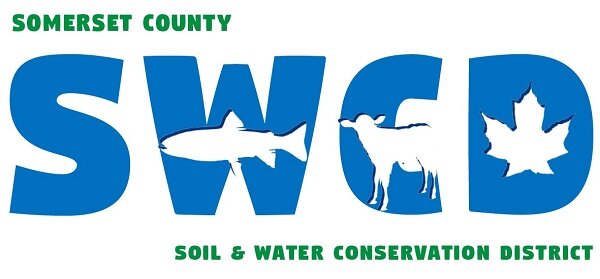Be Grateful for the Dead
This article first appeared in Maine Woodlands, the newsletter of Maine Woodland Owners, January 2022
Be Grateful for the Dead
By Jennifer Brockway
Last year, one of my favorite trees at the Yankee Woodlot Demonstration Forest in Skowhegan came down, a massive two-trunked oak that I had shimmied up for change in perspective multiple times. While I miss its towering presence, this great tree is no less important in death than it was in life. In fact, by some accounting it now plays an even larger role in the forest ecosystem. By providing habitat, nutrients, shelter and more, down logs like my beloved oak are the biological capital that fuels the long-term health of a forest ecosystem.
The ecological value of dead trees is immense and varied. To begin with, down logs are anything but dead. While a living tree can be an estimated 5% living cells by volume, in a dead one, that number can exceed 40% thanks to fungi and bacteria. And. all that life attracts more life.
An estimated 2/3 of all wildlife species – 45% of all bird species – use dead trees or down wood for some portion of their life cycle. While many of us appreciate a standing dead tree for its habitat value – think woodpeckers and wood ducks – down trees offer wildlife benefit as well. Down logs and other course woody material cluttering up the forest floor provides cover for a host of birds, amphibians and small mammals.
Ruffed grouse may use my downed tree as a drumming log and a towhee may nest in the space beneath it. A fox may den at its base. A garter snake may hibernate in its rotting wood. Salamanders will find shelter – and prey – in and around this tree for decades to come. When you think about woodland wildlife, salamanders may not be high on your list, but these amphibians comprise the greatest biomass of terrestrial vertebrate species in healthy eastern forests – outranking moose and deer! Their numbers make them an important food source and a big component of the forest ecosystem.
The extensive fungal network – mycelium – that will ultimately thread through every inch of the two, 50’ trunks will feed insects, such as ants, which are then preyed upon by birds and even bears. Mushrooms – food for mice, chipmunks, deer – will develop annually. Solitary bees, important forest pollinators, will also live in my tree. Going deeper, the soil hosts a complex micro-community that will also benefit as my tree decomposes, returning its nutrients and long-held carbon back into the forest community. Removal of this dead wood from the forest would deprive the soil of this re-investment of biological capital.
Snugged into the sheltered crevices and pockets that develop as this ‘nurse log’ decomposes, tree seedlings will have opportunity to germinate and grow. As one of the tops decays and breaks away, course woody material will slide down slope to the stream, where it will trap sediments and slow spring runoff, and provide cover and cooler temperatures for fish.
In death, this majestic tree will feed the forest ecosystem that fed it. So if a tree falls in your forest, let it be. The woods will be better for it.
— Jennifer Brockway is Outreach Coordinator for Somerset County Soil & Water Conservation District and a family woodland owner in Waldo County.

